- Table of US National Parks
- A Brief History of US National Parks
- US National Parks Guide To Visiting
- List of All US National Parks by State
- Alaska National Parks
- American Samoa National Parks
- Arizona National Parks
- Arkansas National Parks
- California National Parks
- Colorado National Parks
- Florida National Parks
- Hawaii National Parks
- Indiana National Parks
- Kentucky National Parks
- Maine National Parks
- Michigan National Parks
- Minnesota National Parks
- Missouri National Parks
- Montana National Parks
- Nevada National Parks
- New Mexico National Parks
- North Dakota National Parks
- Ohio National Parks
- Oregon National Parks
- South Carolina National Parks
- South Dakota National Parks
- Tennessee National Parks
- Texas National Parks
- Utah National Parks
- Virgin Islands National Parks
- Virginia National Parks
- Washington National Parks
- West Virginia National Parks
- Wyoming National Parks
- Want to check every national park off your bucket list?
- List of States Without National Parks (But With A National Park Unit)
- US National Parks Frequently Asked Questions
- How many US national parks are there?
- Are there 62 or 63 US national parks?
- Which state has the most national parks?
- Which is the smallest national park in the U.S.?
- Which is the largest national park in the US?
- Does every state in America have a national park?
- What state does not have a national park?
- How many states have national parks?
- What is the best way to keep track of US national parks visited?
- Which national park is in 3 states?
- Free US National Park Checklist + Map!
The United States is home to some of the most beautiful and varied landscapes on Earth. From enormous mountain ranges to barren deserts, this country has it all. And the best place to witness the beauty is within our very own US national parks!
Guide highlights:
- List of all 63 U.S. National Parks
- Frequently asked questions about our nation parks
- Tips for national park trip planning
- Free printable checklist of the national parks!
The national parks in the U.S. really are just a giant playground for adults and children. There is something to enjoy for everyone.
Like to walk? Hike an easy paved trail found in any of the US national parks and take in the beauty.
Like to walk but also want adventure? Take the strenuous trail up to a mountain peak in some of the us national parks like Big Bend and be amazed at how the world looks from way up there.
Not to forget the other activities typically available in these amazing parks: kayaking, fishing, horseback riding, backpacking, and camping of course!
The national parks in the United States are must-see destinations, so I felt obligated to compiled a list of all 63 of them. This will be the guide I use when Phillip and I head out on our RVing journey and we hope others like yourself can gain quality insight and guidance from it too!
With all that said, we hope you enjoy our guide to the U.S. National Parks.
Happy RVing! 😄

Table of US National Parks
| Park Name | State | Year Est. | Annual Visitors |
|---|---|---|---|
| Denali | Alaska | 1917 | 230,000 |
| Gates of the Arctic | Alaska | 1980 | 7,400 |
| Glacier Bay | Alaska | 1980 | 90,000 |
| Katmai | Alaska | 1918 | 24,800 |
| Kenai Fjords | Alaska | 1980 | 412,000 |
| Kobuk Valley | Alaska | 1980 | 11,500 |
| Lake Clark | Alaska | 1980 | 18,300 |
| Wrangell-St. Elias | Alaska | 1980 | 50,000 |
| American Samoa | American Samoa | 1988 | 8,500 |
| Grand Canyon | Arizona | 1919 | 4.53 M |
| Petrified Forest | Arizona | 1962 | 590,000 |
| Saguaro | Arizona | 1994 | 1.08 M |
| Hot Springs | Arkansas | 1921 | 2.16 M |
| Channel Islands | California | 1980 | 319,200 |
| Death Valley | California | 1994 | 1.15 M |
| Joshua Tree | California | 1994 | 3.06 M |
| Kings Canyon | California | 1940 | 563,000 |
| Lassen Volcanic | California | 1916 | 360,000 |
| Pinnacles | California | 2013 | 349,000 |
| Redwood | California | 1968 | 436,000 |
| Sequoia | California | 1890 | 1.06 M |
| Yosemite | California | 1890 | 3.29 M |
| Black Canyon of the Gunnison | Colorado | 1999 | 309,000 |
| Great Sand Dunes | Colorado | 1932 | 602,600 |
| Mesa Verde | Colorado | 1906 | 548,000 |
| Rocky Mountain | Colorado | 1915 | 4.43 M |
| Biscayne | Florida | 1980 | 706,000 |
| Dry Tortugas | Florida | 1935 | 84,000 |
| Everglades | Florida | 1947 | 942,000 |
| Haleakala | Hawaii | 1961 | 853,000 |
| Hawai’i Volcanoes | Hawaii | 1916 | 1.26 M |
| Indiana Dunes | Indiana | 2019 | 3.18 M |
| Mammoth Cave | Kentucky | 1941 | 516,000 |
| Acadia | Maine | 1919 | 4.07 M |
| Isle Royale | Michigan | 1940 | 26,000 |
| Voyageurs | Minnesota | 1975 | 243,000 |
| Gateway Arch | Missouri | 2018 | 1.15 M |
| Glacier | Montana | 1910 | 3.08 M |
| Great Basin | Nevada | 1986 | 145,000 |
| Carlsbad Caverns | New Mexico | 1930 | 349,000 |
| White Sands | New Mexico | 2019 | 782,000 |
| Theodore Roosevelt | North Dakota | 1978 | 796,000 |
| Cuyahoga Valley | Ohio | 1974 | 2.58 M |
| Crater Lake | Oregon | 1902 | 644,000 |
| Congaree | South Carolina | 2003 | 215,000 |
| Badlands | South Dakota | 1978 | 1.22 M |
| Wind Cave | South Dakota | 1903 | 709,000 |
| Great Smoky Mountains | Tennessee | 1934 | 14.6 M |
| Big Bend | Texas | 1944 | 581,000 |
| Guadalupe Mountains | Texas | 1972 | 243,000 |
| Virgin Islands | US Virgin Islands | 1956 | 324,000 |
| Arches | Utah | 1929 | 1.81 M |
| Bryce Canyon | Utah | 1928 | 2.1 M |
| Canyonlands | Utah | 1964 | 912,000 |
| Capitol Reef | Utah | 1971 | 1.41 M |
| Zion | Utah | 1919 | 5.04 M |
| Shenandoah | Virginia | 1935 | 1.59 M |
| Mount Rainier | Washington | 1899 | 1.67 M |
| North Cascades | Washington | 1968 | 18,000 |
| Olympic | Washington | 1938 | 2.72 M |
| New River Gorge | West Virginia | 2020 | 1.68 M |
| Grand Teton | Wyoming | 1929 | 3.89 M |
| Yellowstone | Wyoming | 1872 | 4.86 M |
A Brief History of US National Parks
How The National Park Service Started
Ulysses S. Grant, as president of the United States, signed the Yellowstone National Park Protections Act on March 1, 1872. After that, Yellowstone and its special geothermal features were safe from further destruction “for the good of the people and their own pleasure.
After the United States set the standard, nations around the world created national parks to preserve natural areas of their own.”
Whether you want to camp in the Lake District, climb through the Grand Canyon, bungee jump by Victoria Falls, or cruise along the calm Lijiang river, national parks are wonderful tourist places because they are natural and undeveloped.
When asked to explain national parks, author and historian Wallace Stegner said it best: “America’s greatest innovation ever.
They are a perfect reflection of the finest in us while being wholly American and democratic.”
Since Yellowstone was declared the first national park in 1872, governments all over the world have established their own national parks.
Over 4,000 national parks may be found in virtually every country, providing refuge for a wide variety of species and ecosystems. National parks provide a wide range of spectacular environments, from tropical rain forests to arid deserts, from picturesque lakes and glaciers to harsh, rugged tundra. The vast majority are accessible to visitors, allowing anybody to take pleasure in and learn about these remarkable preserves.
National parks are great vacation spots for people of all ages, whether they’re interested in seeing rare and exotic animals, awed by the world’s most stunning natural occurrences and historic architecture, or just want to get away from the stress of everyday life. There is a wide variety of things to do, from relaxing strolls and bike rides to exciting adventures like rock climbing and ziplining.
Protecting and preserving national parks and their distinctive habitats is a top concern, so it is crucial that tourists observe appropriate travel habits to ensure the safety of themselves and the native wildlife. Before you travel, make sure you know the laws of the park, including if you need a permit for activities like camping or walking your dog.
The National Park Service Is Always Expanding
As part of a $2.3 trillion pandemic stimulus package, the New River Gorge National River became a national park and preserve right after Christmas 2020. Mountain climbers are drawn to the 73,000-acre area in West Virginia because it has the deepest gorge in the Appalachian Mountains. People who want to ride 53 miles of whitewater on the river are also drawn to the area. People can see kingfishers, beavers, and wild turkeys, fish for smallmouth bass and muskellunge, and walk along the African American Heritage trail.
The US National Park System is made up of 423 sites, including battlefields, military parks, historic sites, memorials, parkways, preserves, rivers, and “National Parks,” which are some of the most special places in the system. These national parks are in 30 states and 2 territories. They cover an area of 7,500 miles, from the rocky coast of Maine to the coral reefs of American Samoa in the South Pacific. And since New River Gorge was just added, there are now 63 of them.

Millions of people find magic in these parks every year: watching the sun rise over the horizon from Maine’s Cadillac Mountain, exploring Kentucky’s Mammoth Cave, looking out over Arizona’s Grand Canyon, taking pictures of bison herds in Yellowstone, or climbing Alaska’s Mount Denali in the freezing cold. Since the beginning, America’s national parks have been places where people can find peace, go on adventures, and learn new things.
Even though all of these places have been around for billions of years, you could say that Thomas Jefferson started the movement to protect them, back when no one in the United States knew what was out there in the wilderness. In 1801, when Jefferson became president, there were only 16 states, and the country was only 25 years old. It didn’t even cover a third of the continent. The area west of the Mississippi River was unknown to the people who lived in the 16 states.
Then, in 1803, Jefferson started America’s age of exploration by sending Capt. Meriwether Lewis and Lt. William Clark to explore the 828,000-square-mile Louisiana Purchase (land the U.S. had just bought from the French) and the Northwest all the way to the Pacific Ocean. This Corps of Discovery trip, made up of about 80 service members and civilians, went west and then back east for more than two years. Lewis, Clark, and their crew wrote down everything they saw on their 8,000-mile journey. They were amazed by animals they had never heard of and collected plants and minerals that were new to science. They met with local tribes and got animal skins, buffalo robes, and beaded native leggings.
Their stories of adventure hinted at the great natural wonders beyond the Appalachians, which excited Jefferson and others. They decided that the U.S. should claim the continent by claiming that God had given the country a right to the land. This idea became known as “Manifest Destiny.” Soon, settlers headed out to claim the land. On their way, they rode through grassy prairies, went under snow-capped mountains, and crossed wide, powerful rivers.

George Catlin, a painter, was one of these brave people. During his travels in the 1830s, he met members of the Blackfoot, Cherokee, Chippewa, and other tribes in what is now North Dakota, Oklahoma, and Minnesota. He made a lot of sketches and paintings, which people loved when he showed them back in the east. Catlin was one of the first people to say that it was important to protect and preserve these western lands. He wrote about the need for “a magnificent park…a nations park, containing man and beast in all the wildness and freshness of their nature’s beauty.”
Others agreed, and in 1872, President Ulysses S. Grant signed the Yellowstone Act, making Yellowstone the first national park. Environmentalists like John Muir and America’s best conservation president, Theodore Roosevelt, who set aside 230 million acres of land for federal protection, were largely responsible for making more parks.
Setting Up The National Park Service
In 1916, there were only 326,500 people who went to the parks. In 1910, President Woodrow Wilson thought it was important to set up the National Park Service “to protect the scenery, natural and historic objects, and wild animals.” Franklin Roosevelt made the Civilian Conservation Corps in June 1933. His work-relief program during the Great Depression put 3 million people to work and led to the largest program to improve parks in the country’s history. Crews planted 3 billion trees, paved 125,000 miles of roads, fought fires, got rid of invasive species, stocked waterways, and built bridges, campgrounds, and 3,000 fire lookouts.
After World War II ended in 1945, the U.S. economy grew quickly, and people who had been working hard for years to make ends meet were glad to have some time off. With money in the bank and new station wagons and Airstream trailers in their driveways, they set out to see America and flocked to these restful parks. By 1952, there were 27 of them, and almost 42 million people went to them, according to the US National Park Service. The numbers kept going up. In 2021, almost 300 million people went to one of the national parks.

Popularity leads to problems. Overuse and a lack of money are putting a strain on the parks. And there are now bigger problems. Several terrible fires have been caused by droughts in the West. The most recent ones were in California’s Sequoia, Kings Canyon, and Yosemite parks. Phosphorus from sugar farms runs off into the Everglades and makes them dirty. Glaciers in Alaska’s Denali National Park are melting because the weather is getting warmer. Invasive species continue to endanger many natural habitats.
The work of more than 1,800 park rangers wearing hats like Smokey Bear’s makes it clear that these places are being saved and kept in good shape. Every park shows how volunteers, environmentalists, and researchers help out on the ground.
In January 2021, President Joe Biden signed an order that said a Civilian Climate Corps should be made. Modeled after Roosevelt’s Civilian Conservation Corps, it aims to “conserve and restore public lands and waters, strengthen community resilience, increase reforestation, increase carbon sequestration in the agricultural sector, protect biodiversity, improve access to recreation, and address the changing climate.” One of its biggest winners will be the US national parks.
The fact that they exist and can be used by all Americans is a tribute to the foresight and hard work of many people, who we should thank. People often say that the national parks are “America’s best idea.”

US National Parks Guide To Visiting
All Americans can agree that the US national parks are a treasure that can’t be argued with. They are the happy result of our ancestors’ foresight.
It’s a true wonder how the Colorado River carved out the Grand Canyon, and there are many other natural phenomenons to be found in the west. The West is home to many of the country’s best-known parks. But the American West doesn’t end at the Pacific coast. The park system goes all the way to Hawaii and American Samoa.
Some of the most beautiful parts of the United States can be found in the parks of the Northwest, from the high peaks of Wyoming to the rain forests of Washington to the vast beauty of Alaska.
There are many different kinds of national parks in the middle of the United States. Some are close to cities, while others are in the middle of nowhere. I can already catch myself dreaming of sitting in front of that campfire and cooking up a nice meal in the middle of national park.
Compared to their big-shouldered cousins in the West, the parks on the East Coast of the U.S. have a more subtle magic and a wider range of geology and wildlife. These parks have something for everyone, from the rocky shores of Acadia to the strange waters of the Everglades.
Things To Consider When Planning Your Visit to US National Parks
National Park Pass

You may be more familiar with a State Park Pass if you typically just explore in your area.
But did you know there is also a US National Park Pass to help you explore all of the best parks in the U.S.?
Some national parks are free to get into, while some have a fee per car. If you want to go to multiple national parks in a year, the national park pass is a great idea.
You can go to all U.S. national parks and hundreds of other historical sites and national monuments as much as you want.
For only $80, you can get your National Park Pass here.
Park Reservations
Check to see if the national park you want to go to needs you to make a reservation or get a permit.
Since 2022, some national parks have made it required to get a reservation to enter all or part of their park. Usually, these reservations fill up fast, so look for the specific requirements of each park as soon as you start planning your trip.
Some of the parks we know has a reservation program include: Arches, Glacier, and Yosemite, but there are many others.
Park Closures
It’s also critical to check to see if a park is closed before planning your trip. Your time in a national park can be changed by things like the weather and road closures. Make sure you know about any road closures, changes in how the shuttles work, or requirements for visiting. The easiest way to find that info is on the main page of whichever US national park you are visiting.
Trail Closures
If there is a specific trail you are interested in exploring, even if the park is open that specific point could be closed due to rain, snow, rockslides and other factors.
When we went to Big Bend National Park for the second time, we were exciting to see the Santa Elena Canyon again. We didn’t know until we drove up to the gate that it was closed due to flooding in the area.
Don’t let those unexpected circumstances happen to you on your trip!
Weather
Weather in Northern U.S.
If you are from the south like us (we’re from sunny Florida), then you may want to choose carefully when you visit the northern U.S.
Winter can be terrible for visiting some National Parks because it is cold and snowy. Unless you ski a lot and know how to drive in snow, you might want to stay away from the North from late November to early February.
Weather in Southern U.S.
In the summer, temperatures in national parks like Big Bend reach more than 130 degrees. If you aren’t prepared with salty snacks, plenty of water, and sunscreen it can be a very bad time (think heat exhaustion).
Thankfully the southern parks take heat exhaustion very seriously and have a ton of precautions in place to protect their visitors, but sometimes its better to just visit the park when its a little cooler.
States like Florida, on the other hand, have hurricane season from June to September. If you don’t want to spend your entire trip seeking cover indoors from the rain, you may want to pick a “drier” time of year.
Our Ideal Road Trip Route When Considering Weather
If you are starting in Fall, right after the rush of summer crowds is coming to an end, we would want to start our trip in the North East. You can see the leaves change in New England in the fall.
From there we would spend August through October moving from Washington to Maine keeping in mind we have a whole year of travel open.
From October to November, we would drive down the East Coast.
From December to January, we would crosse the South to get to Arizona.
From February to April, we would go back and forth across the southwest to Death Valley.
From May on, enjoy a beautiful summer exploring all the west U.S. has to see!
If you don’t have much time, I would just suggest checking out US national parks where the weather is often extreme during the times where it isn’t. Rocky Mountain National Park in Colorado, Glacier National Park in Montana, and Voyageurs and Isle Royale in the north. And, of course, the desert National Parks like Death Valley in California and the parks in Utah.
Avoid Crowds
The best way to truly get to know nature and the park you are in is when it is relatively quiet expect for the sounds coming from the parks wildlife.
Visiting during the shoulder months can help avoid crowds.
Summer is the busiest time for most parks so if you visit in the spring or fall you should be able to avoid crowds.
If you are visiting a US National Park during a busier month, you can still find some solitude by getting up early and going out to explore before sunrise.
Follow the Leave No Trace Principles
Leave No Trace helps us leave less of a mark on nature when we go outside.
The Leave No Trace principles say that you should stay on the designated trails to avoid unnecessary erosion and to carry out all trash and food you brought in with you.
These rules are important for keeping our US national parks in good shape for many years to come and for protecting wildlife.
Use the US National Park Passport Book
A national park passport lets you keep track of your trips in one small place.
At the visitor centers of the national parks, you can get free stamps. If you have your national park passport book, a park ranger at each park you visit will stamp it.
It’s the perfect simple keepsake!
How to Visit All US National Parks
How long would it take to visit all of the National Parks?
If you wanted to really get to know each park and all of its trails, it could take years.
Many travelers with limited time and funds spend about 4-7 months visiting all national parks in the U.S. They will plan their trip from April – November, but this is not the only option or necessarily the best one. Everyones circumstances are different, but if you have the luxury of time and money, ten to twelve months would be an ideal time to visit them all while taking time to appreciate each one.
Keep in mind US National Parks can always get added thus making these trips longer. So what may take 7 months today may take 8 months in the future.
Best Time to Start Your US National Park Road Trip
We already talked about where, but what about when?
It’s always the most disruptive question. When you should start your cross-country road trip.
The truth is there is no best time to take the trip. Along the way, you’ll have to deal with things like freezing weather, heat and crowds. Some parks can only be seen out of season because they may be too busy or expensive during peak season. It’s just how it goes. The United States is so big and has so many different kinds of people that it would be impossible to have “perfect” conditions in every state.
So find the perfect time that works for you to start and work around it! As long as you can sit outside next to the fire, maybe cook up a meal outside, then you should be good to go!
List of All US National Parks by State
This list of US national parks is in alphabetical order, starting with the name of the state and then the name of the park. Keep scrolling to see the whole list.
I put parks that are in more than one state together under the state that has the most area of the park. Here’s where you can find those parks that are in more than one state:
- Death Valley National Park – California. A small section reaches into Nevada.
- Gateway Arch National Park – Missouri. A small section can be found in Illinois.
- Great Smoky Mountains National Park – Tennessee. A small section can be found in North Carolina.
- Yellowstone National Park – Wyoming. It also reaches into Idaho and Montana.
Alaska National Parks
Denali National Park
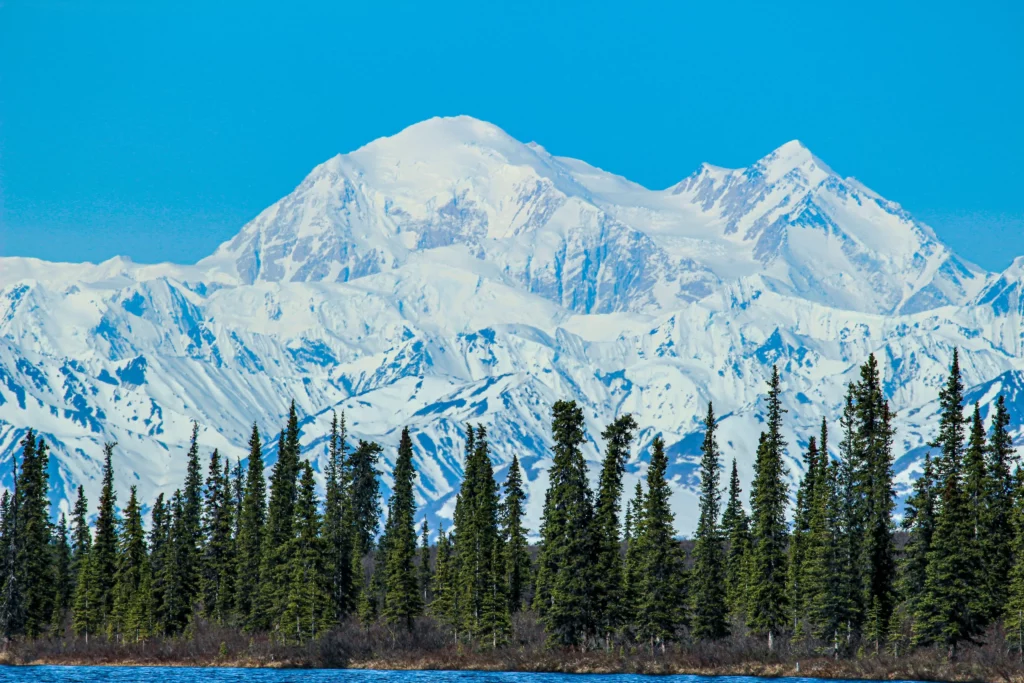
Year Established: 1917
Annual Visitors: 229,521
Size: 4.7 Million Acres
Best Time to Visit: June to August
Learn More About Denali National Park Here
Gates of the Arctic National Park

Year Established: 1980
Annual Visitors: 7,400
Size: 8.47 Million Acres
Best Time to Visit: June to July
Learn More About Gates of the Arctic National Park Here
Glacier Bay National Park

Year Established: 1980
Annual Visitors: 90,000
Size: 3.2 Million Acres
Best Time to Visit: June to September
Learn More About Glacier Bay National Park Here
Katmai National Park
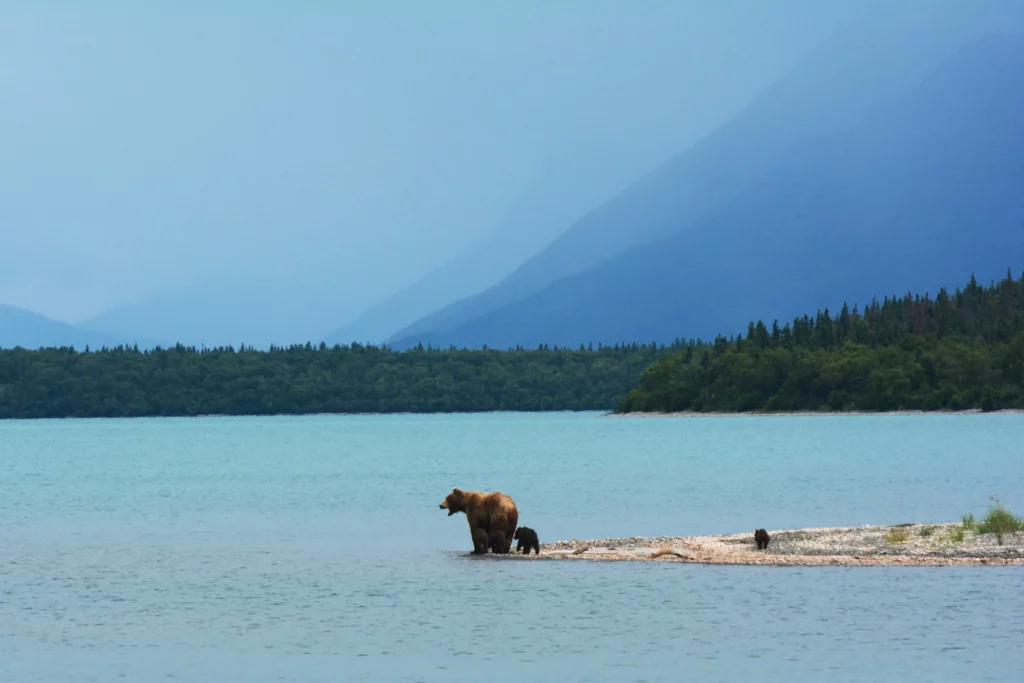
Year Established: 1918
Annual Visitors: 24,800
Size: 4.09 Million Acres
Best Time to Visit: June to September
Learn More About Katmai National Park Here
Kenai Fjords National Park

Year Established: 1980
Annual Visitors: 412,000
Size: 607,805 Acres
Best Time to Visit: June to August
Learn More About Kenai Fjords National Park Here
Kobuk Valley National Park
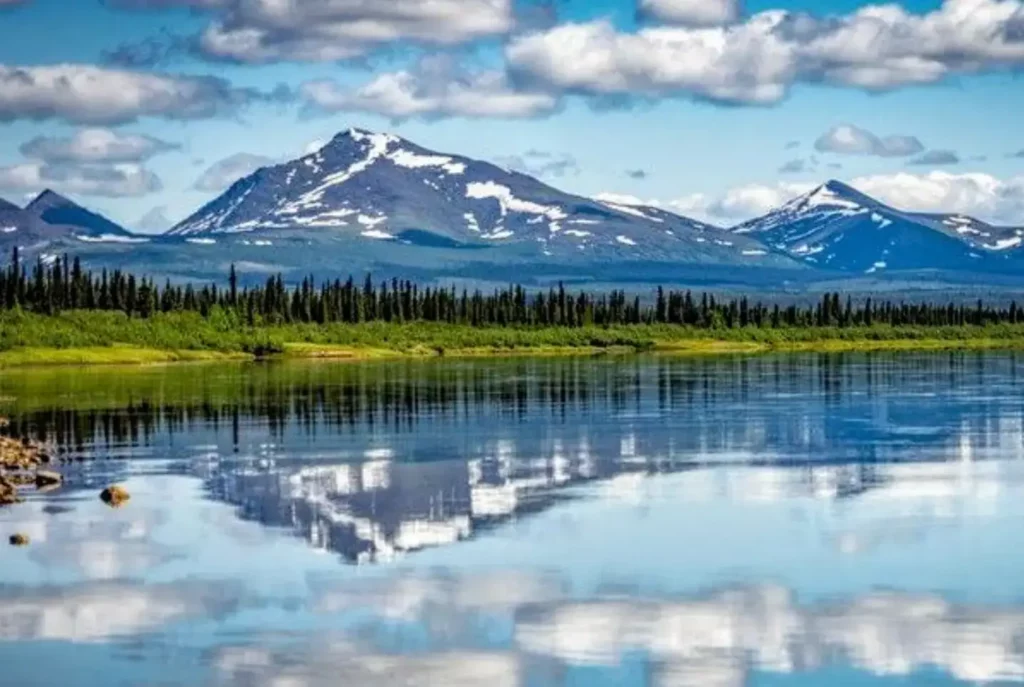
Year Established: 1980
Annual Visitors: 11,500
Size: 1.75 Million Acres
Best Time to Visit: June to September
Learn More About Kobuk Valley National Park Here
Lake Clark National Park
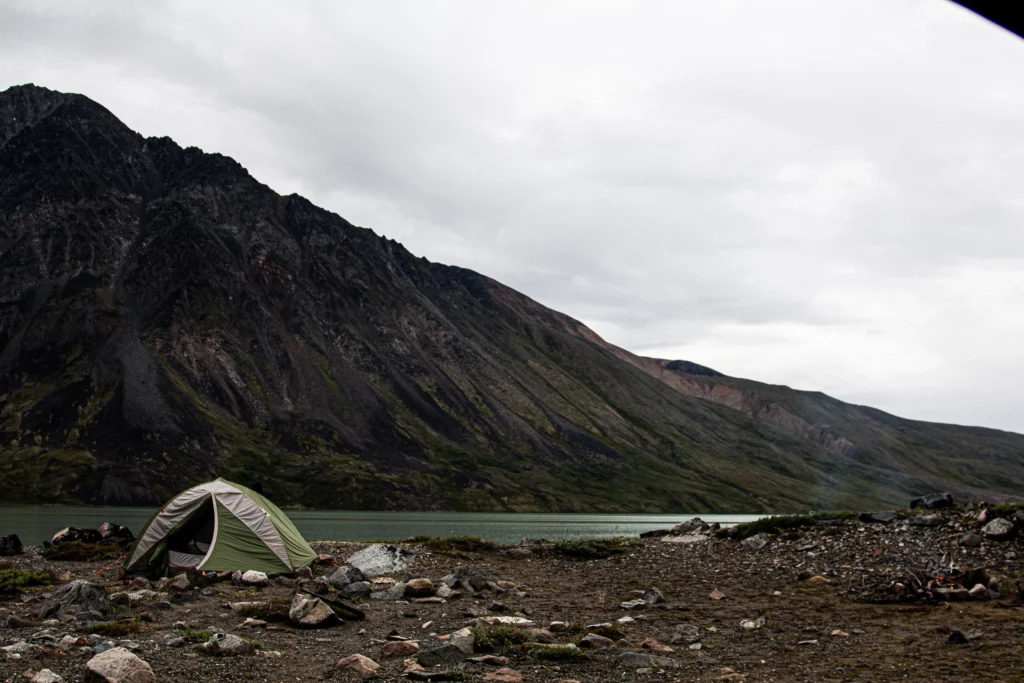
Year Established: 1980
Annual Visitors: 18,300
Size: 4.03 Million Acres
Best Time to Visit: June to September
Learn More About Lake Clark National Park Here
Wrangell-St. Elias National Park

Year Established: 1980
Annual Visitors: 50,000
Size: 13.2 Million Acres
Best Time to Visit: June to September
Learn More About Wrangell St. Elias National Park Here
Other Alaska National Park Service Units
- Alagnak Wild River
- Alaska Public Lands Information Centers
- Aleutian Islands World War II National Historic Area
- Aniakchak National Monument & Preserve
- Bering Land Bridge National Preserve
- Cape Krusenstern National Monument
- Iñupiat Heritage Center
- Klondike Gold Rush National Historical Park
- Noatak National Preserve
- Sitka National Historical Park
- Yukon-Charley Rivers National Preserve
American Samoa National Parks
National Park of American Samoa

Year Established: 1988
Annual Visitors: 8,500
Size: 8,256 Acres
Best Time to Visit: June to September
Learn More About American Samoa National Park Here
Arizona National Parks
Are you heading to the Arizona area soon? Find the best Arizona RV Parks here.
Grand Canyon National Park

Year Established: 1919
Annual Visitors: 4.53 Million
Size: 1.2 Million Acres
Best Time to Visit: March to May, September to October
Learn More About Grand Canyon National Park Here
Petrified Forest National Park
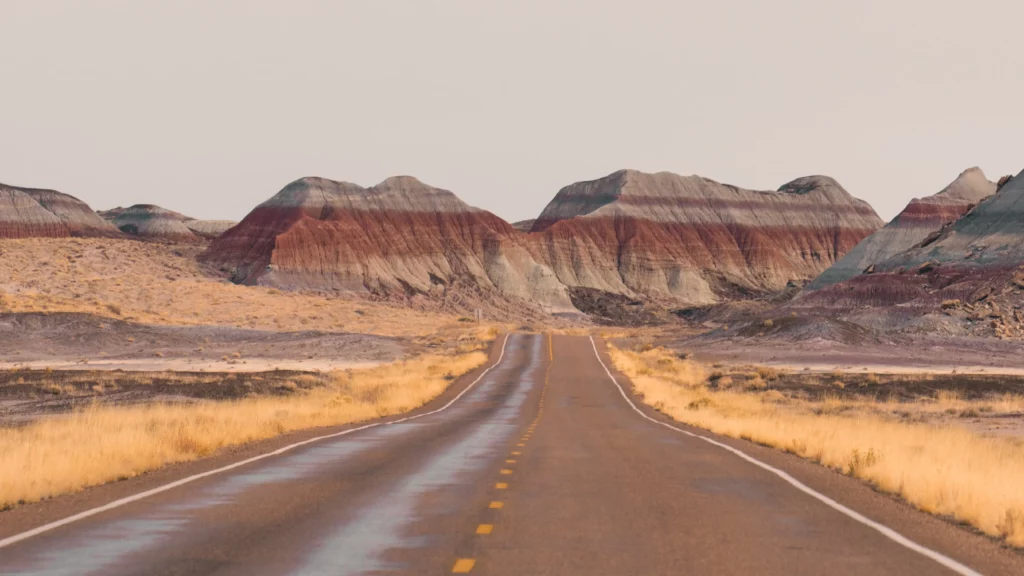
Year Established: 1962
Annual Visitors: 590,000
Size: 221,390 Acres
Best Time to Visit: April to September
Learn More About Petrified Forest National Park Here
Saguaro National Park

Year Established: 1994
Annual Visitors: 1.08 Million
Size: 91,327 Acres
Best Time to Visit: November to March
Learn More About Saguaro Forest National Park Here
Other Arizona National Park Units
- Canyon de Chelly National Monument
- Casa Grande Ruins National Monument
- Chiricahua National Monument
- Coronado National Memorial
- Fort Bowie National Historic Site
- Glen Canyon National Recreation Area
- Grand Canyon-Parashant National Monument
- Hubbell Trading Post National Historic Site
- Juan Bautista de Anza National Historic Trail
- Lake Mead National Recreation Area
- Montezuma Castle National Monument
- Navajo National Monument
- Old Spanish National Historic Trail
- Organ Pipe Cactus National Monument
- Pipe Spring National Monument
- Sunset Crater Volcano National Monument
- Tonto National Monument
- Tumacácori National Historical Park
- Tuzigoot National Monument
- Walnut Canyon National Monument
- Wupatki National Monument
Arkansas National Parks
Are you heading to the Arkansas area soon? Find the best Arkansas RV Parks here.
Hot Springs National Park

Year Established: 1921
Annual Visitors: 2.16 Million
Size: 5,554 Acres
Best Time to Visit: September to November
Learn More About Hot Springs National Park Here
Other Arkansas National Park Units
- Arkansas Post National Memorial
- Buffalo National River
- Fort Smith National Historic Site
- Little Rock Central High School National Historic Site
- Pea Ridge National Military Park
- President William Jefferson Clinton Birthplace Home National Historic Site
- Trail Of Tears National Historic Trail
California National Parks
Are you heading to the California area soon? Find the best California RV Parks here.
Channel Islands National Park
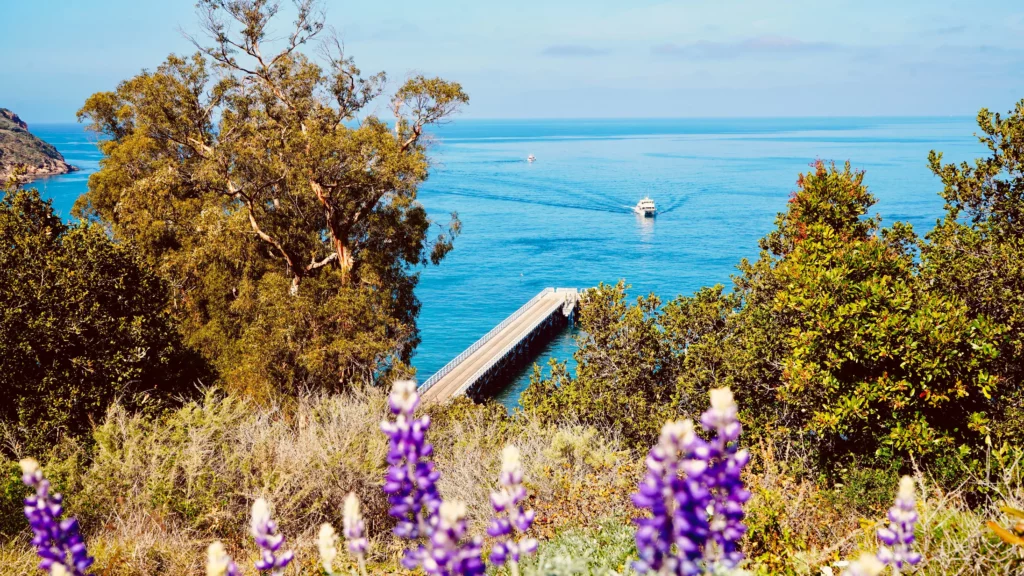
Year Established: 1980
Annual Visitors: 319,200
Size: 249,354 Acres
Best Time to Visit: June to October
Learn More About Channel Island National Park Here
Death Valley National Park

Year Established: 1994
Annual Visitors: 1.15 Million
Size: 3.42 Million Acres
Best Time to Visit: November to March
Learn More About Death Valley National Park Here
Joshua Tree National Park

Year Established: 1994
Annual Visitors: 3.06 Million
Size: 795,200 Acres
Best Time to Visit: March to April, October to November
Learn More About Joshua Tree National Park Here
Kings Canyon National Park

Year Established: 1940
Annual Visitors: 563,000
Size: 461,901 Acres
Best Time to Visit: June to October
Learn More About Kings Canyon National Park Here
Lassen Volcanic National Park

Year Established: 1916
Annual Visitors: 360,000
Size: 106,452 Acres
Best Time to Visit: June to October
Learn More About Lassen Volcanic National Park Here
Pinnacles National Park

Year Established: 2013
Annual Visitors: 349,000
Size: 26,000 Acres
Best Time to Visit: March to May, September to November
Learn More About Pinnacles National Park Here
Redwood National Park

Year Established: 1968
Annual Visitors: 436,000
Size: 131,983 Acres
Best Time to Visit: March to November
Learn More About Redwood National Park Here
Sequoia National Park

Year Established: 1890
Annual Visitors: 1.06 Million
Size: 328,315 Acres
Best Time to Visit: June to October
Learn More About Sequoia National Park Here
Yosemite National Park

Year Established: 1890
Annual Visitors: 3.29 Million
Size: 761,748 Acres
Best Time to Visit: June to October
Learn More About Yosemite National Park Here
Other California National Park Units
- Alcatraz Island
- Cabrillo National Monument
- California National Historic Trail
- Castle Mountains National Monument
- César E. Chávez National Monument
- Devils Postpile National Monument
- Eugene O’Neill National Historic Site
- Fort Point National Historic Site
- Golden Gate National Recreation Area
- John Muir National Historic Site
- Juan Bautista de Anza National Historic Trail
- Lava Beds National Monument
- Manzanar National Historic Site
- Mojave National Preserve
- Muir Woods National Monument
- Old Spanish National Historic Trail
- Point Reyes National Seashore
- Pony Express National Historic Trail
- Port Chicago Naval Magazine National Memorial
- Presidio of San Francisco
- Rosie the Riveter World War II Home Front National Historical Park
- San Francisco Maritime National Historical Park
- Santa Monica Mountains National Recreation Area
- Tule Lake National Monument
- Whiskeytown National Recreation Area
Colorado National Parks
Are you heading to the Colorado area soon? Find the best Colorado RV Parks here.
Black Canyon of the Gunnison National Park

Year Established: 1999
Annual Visitors: 309,000
Size: 30,750 Acres
Best Time to Visit: May to October
Learn More About Black Canyon of Gunnison National Park Here
Great Sand Dunes National Park

Year Established: 1932
Annual Visitors: 602,600
Size: 149,137 Acres
Best Time to Visit: March to May, September to November
Learn More About Great Sand Dunes National Park Here
Mesa Verde National Park
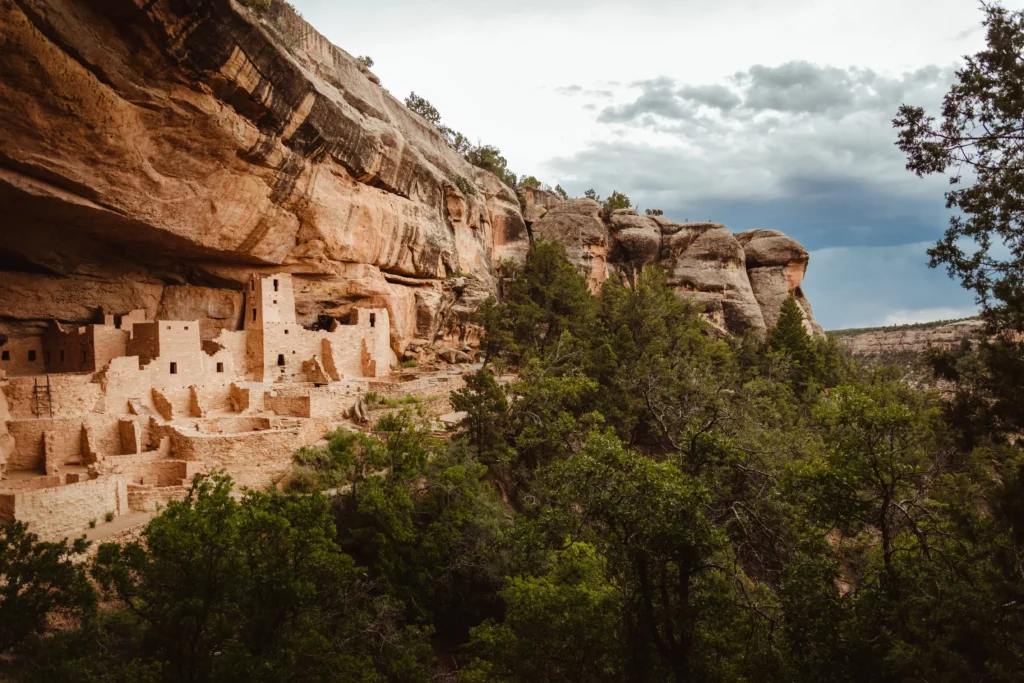
Year Established: 1906
Annual Visitors: 548,000
Size: 52,485 Acres
Best Time to Visit: June to September
Learn More About Mesa Verde National Park Here
Rocky Mountain National Park

Year Established: 1915
Annual Visitors: 4.43 Million
Size: 265,807 Acres
Best Time to Visit: June to September
Learn More About Rocky Mountain National Park Here
Other Colorado National Park Units Include
- Amache National Historic Site
- Bent’s Old Fort National Historic Site
- California National Historic Trail
- Colorado National Monument
- Curecanti National Recreation Area
- Dinosaur National Monument
- Florissant Fossil Beds National Monument
- Hovenweep National Monument
- Old Spanish National Historic Trail
- Pony Express National Historic Trail
- Sand Creek Massacre National Historic Site
- Sante Fe National Historic Trail
- Yucca House National Monument
Florida National Parks
Are you heading to the Florida area soon? Find the best Florida RV Parks here.
Biscayne National Park

Year Established: 1980
Annual Visitors: 706,000
Size: 172,971 Acres
Best Time to Visit: December to February
Learn More About Biscayne National Park Here
Dry Tortugas National Park

Year Established: 1935
Annual Visitors: 84,000
Size: 64,701 Acres
Best Time to Visit: December to February, April to May
Learn More About Dry Tortugas National Park Here
Everglades National Park

Year Established: 1947
Annual Visitors: 942,000
Size: 1.4 Million Acres
Best Time to Visit: December to February
Learn More About Everglades National Park Here
Other Florida National Park Units
- Big Cypress National Preserve
- Canaveral National Seashore
- Castillo de San Marcos National Monument
- De Soto National Memorial
- Fort Caroline National Memorial
- Fort Matanzas National Monument
- Gulf Islands National Seashore
- Timucuan Ecological and Historic Preserve
Hawaii National Parks
Are you heading to the Hawaii area soon? Find the best Hawaii RV Parks here.
Haleakalā National Park

Year Established: 1961
Annual Visitors: 853,000
Size: 33,265 Acres
Best Time to Visit: December to April
Learn More About Haleakalā National Park Here
Hawai’i Volcanoes National Park

Year Established: 1916
Annual Visitors: 1.26 Million
Size: 335,259 Acres
Best Time To Visit: All year!
Learn More About Hawai’i Volcanoes National Park Here.
Other Hawaii National Park Units
- Ala Kahakai National Historic Trail
- Hono’uli’uli National Historic Site
- Kalaupapa National Historical Park
- Kaloko-Honokōhau National Historical Park
- Pearl Harbor National Memorial
- Pu’uhonua o Hōnaunau National Historical Park
- Pu’ukoholā Heiau National Historic Site
Indiana National Parks
Are you heading to the Indiana area soon? Find the best Indiana RV Parks here.
Indiana Dunes National Park

Year Established: 2019
Annual Visitors: 3.18 Million
Size: 15,349 Acres
Best Time to Visit: March to May, September to November
Learn More About Indiana Dunes National Park Here
Other Indiana National Park Units
- George Rogers Clark National Historical Park
- Lewis & Clark National Historic Trail
- Lincoln Boyhood National Memorial
Kentucky National Parks
Are you heading to the Kentucky area soon? Find the best Kentucky RV Parks here.
Mammoth Cave National Park

Year Established: 1941
Annual Visitors: 516,000
Size: 53,012 Acres
Best Time to Visit: March to April, October to November
Learn More About Mammoth Cave National Park Here
Other Kentucky National Park Units
- Abraham Lincoln Birthplace National Historical Park
- Big South Fork National River & Recreation Area
- Camp Nelson National Monument
- Cumberland Gap National Historical Park
- Fort Donelson National Battlefield
- Lewis & Clark National Historic Trail
- Mill Springs Battlefield National Monument
- Trail of Tears National Historic Trail
Maine National Parks
Are you heading to the Maine area soon? Find the best Maine RV Parks here.
Acadia National Park

Year Established: 1919
Annual Visitors: 4.07 Million
Size: 49,077 Acres
Best Time to Visit: September to October
Learn More About Acadia National Park Here
Other Maine National Park Units
- Appalachian National Scenic Trail
- Katahdin Woods and Waters National Monument
- Maine Acadian Culture Association
- Roosevelt Campobello International Park
- Saint Croix Island International Historic Site
Michigan National Parks
Are you heading to the Michigan area soon? Find the best Michigan RV Parks here.
Isle Royale National Park

Year Established: 1940
Annual Visitors: 26,000
Size: 571,790 Acres
Best Time to Visit: July to August
Learn More About Isle Royale National Park Here
Other Michigan National Park Units
- Keweenaw National Historical Park
- North Country National Scenic Trail
- Pictured Rocks National Lakeshore
- River Raisin National Battlefield Park
- Sleeping Bear Dunes National Lakeshore
Minnesota National Parks
Are you heading to the Minnesota area soon? Find the best Minnesota RV Parks here.
Voyageurs National Park

Year Established: 1975
Annual Visitors: 243,000
Size: 218,222 Acres
Best Time to Visit: June to September
Learn More About Voyageurs National Park Here
Other Minnesota National Park Units
- Grand Portage National Monument
- Mississippi National River and Recreation Areas
- North Country National Scenic Trail
- Pipestone National Monument
- Saint Croix National Scenic Riverway
Missouri National Parks
Are you heading to the Missouri area soon? Find the best Missouri RV Parks here.
Gateway Arch National Park
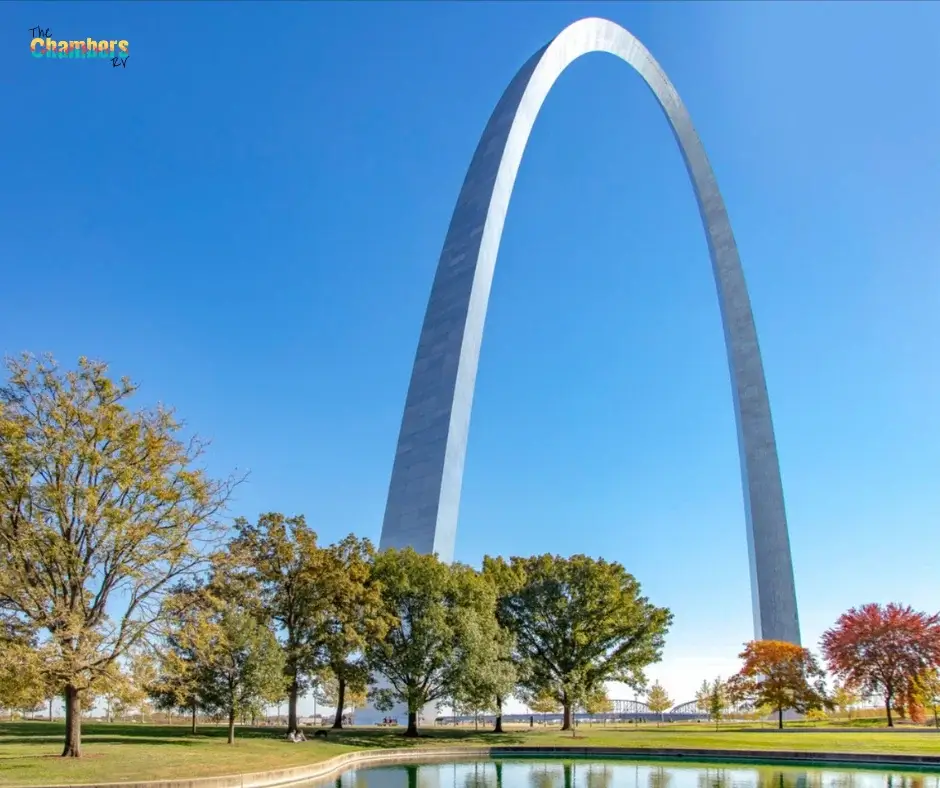
Year Established: 2018
Annual Visitors: 1.15 Million
Size: 193 Acres
Best Time To Visit: May to October
Learn More About Gateway Arch National Park Here.
Other Missouri National Park Units
- California National Historic Trail
- George Washington Carver National Monument
- Harry S Truman National Historic Site
- Lewis & Clark National Historic Trail
- Oregon National Historic Trail
- Ozark National Scenic Riverways
- Pony Express National Historic Trail
- Sante Fe National Historic Trail
- Ste. Geneviève National Historical Park
- Trail of Tears National Historic Trail
- Ulysses S. Grant National Historic Site
- Wilson’s Creek National Battlefield
Montana National Parks
Are you heading to the Montana area soon? Find the best Montana RV Parks here.
Glacier National Park

Year Established: 1910
Annual Visitors: 3.08 Million
Size: 1.01 Million Acres
Best Time To Visit: July to September
Learn More About Glacier National Park Here.
Other Montana National Park Units
- Big Hole National Battlefield
- Bighorn Canyon National Recreation Area
- Fort Union Trading Post National Historic Site
- Grant-Kohrs Ranch National Historic Site
- Ice Age Floods National Geologic Trail
- Lewis & Clark National Historic Trail
- Little Bighorn Battlefield National Monument
- Nez Perce National Historical Park
Nevada National Parks
Are you heading to the Nevada area soon? Find the best Nevada RV Parks here.
Great Basin National Park

Year Established: 1986
Annual Visitors: 145,000
Size: 77,180 Acres
Best Time To Visit: April to October
Learn More About Great Basin National Park Here.
Other Nevada National Park Units
- California National Historic Trail
- Lake Mead National Recreation Area
- Old Spanish National Historic Trail
- Pony Express National Historic Trail
- Tule Springs Fossil Beds National Monument
New Mexico National Parks
Carlsbad Caverns National Park

Year Established: 1930
Annual Visitors: 349,000
Size: 46,766 Acres
Best Time To Visit: All Year!
Learn More About Carlsbad Caverns National Park Here.
White Sands National Park

Year Established: 2019
Annual Visitors: 782,000
Size: 73,600 Acres
Best Time To Visit: October to November
Learn More About White Sands National Park Here.
Other New Mexico National Park Units
- Aztec Ruins National Monument
- Bandelier National Monument
- Capulin Volcano National Monument
- Chaco Culture National Historical Park
- El Camino Real de Tierra Adentro National Historic Trail
- El Malpais National Monument
- El Morro National Monument
- Fort Union National Monument
- Gila Cliff Dwellings National Monument
- Manhattan Project National Historical Park
- Old Spanish National Historic Trail
- Pecos National Historical Park
- Petroglyph National Monument
- Salinas Pueblo Missions National Monument
- Santa Fe National Historic Trail
- Valles Caldera National Preserve
North Dakota National Parks
Are you heading to the North Dakota area soon? Find the best North Dakota RV Parks here.
Theodore Roosevelt National Park

Year Established: 1978
Annual Visitors: 796,000
Size: 70,446 Acres
Best Time To Visit: May to September
Learn More About Theodore Roosevelt National Park Here.
Other North Dakota National Park Units
- Fort Union Trading Post National Historic Site
- Knife River Indian Villages National Historic Site
- Lewis & Clark National Historic Trail
- North Country National Scenic Trail
Ohio National Parks
Are you heading to the Ohio area soon? Find the best Ohio RV Parks here.
Cuyahoga Valley National Park

Year Established: 2000
Annual Visitors: 2.58 Million
Size: 32,572 Acres
Best Time To Visit: April to May, September-October
Learn More About Cuyahoga National Park Here.
Other Ohio National Park Units
- Charles Young Buffalo Soldiers National Monument
- Dayton Aviation Heritage National Historical Park
- First Ladies National Historic Site
- Hopewell Culture National Historical Park
- James A. Garfield National Historic Site
- Lewis & Clark National Historic Trail
- North Country National Scenic Trail
- Perry’s Victory & International Peace Memorial
- William Howard Taft National Historic Site
Oregon National Parks
Are you heading to the Oregon area soon? Find the best Oregon RV Parks here.
Crater Lake National Park
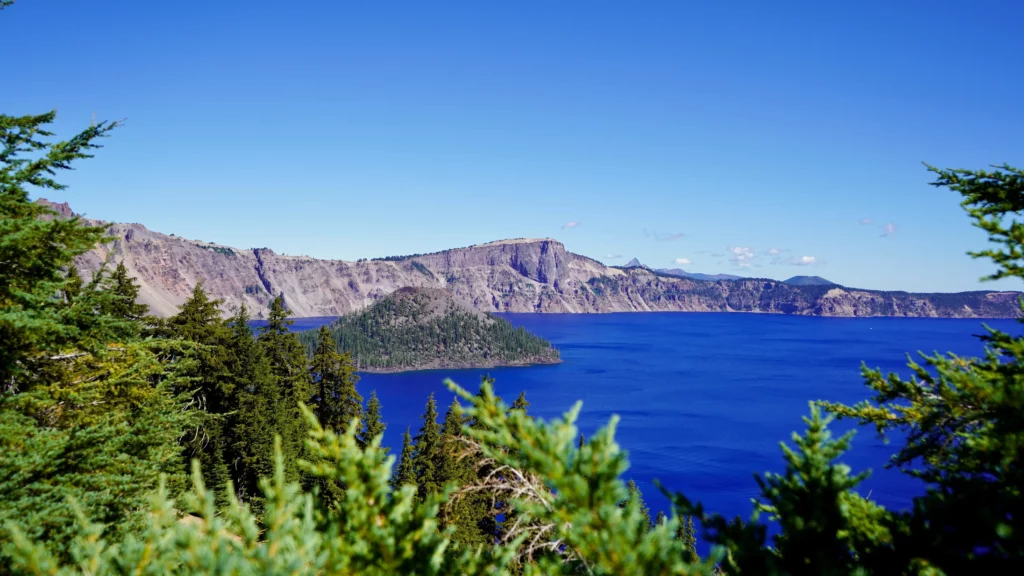
Year Established: 1902
Annual Visitors: 648,000
Size: 183,224 Acres
Best Time To Visit: July to September
Learn More About Crater Lake National Park Here.
Other Oregon National Park Units
- California National Historic Trail
- Fort Vancouver National Historic Site
- Ice Age Floods National Geologic Trail
- John Day Fossil Beds National Monument
- Lewis & Clark National Historic Trail
- Lewis and Clark National Historical Park
- Nez Perce National Historical Park
- Oregon National Historic Trail
- Oregon Caves National Monument and Preserve
South Carolina National Parks
Are you heading to the South Carolina area soon? Find the best South Carolina RV Parks here.
Congaree National Park

Year Established: 2003
Annual Visitors: 215,000
Size: 26,476 Acres
Best Time To Visit: March-June, October-November
Learn More About Congaree National Park Here.
Other South Carolina National Park Units
- Charles Pinckney National Historic Site
- Cowpens National Battlefield
- Fort Sumter and Fort Moultrie National Historical Park
- Kings Mountain National Military Park
- Ninety Six National Historic Site
- Overmountain Victory National Historic Trail
- Reconstruction Era National Historical Park
South Dakota National Parks
Are you heading to the South Dakota area soon? Find the best South Dakota RV Parks here.
Badlands National Park

Year Established: 1978
Annual Visitors: 1.22 M
Size: 242,756 Acres
Best Time To Visit: April to May, September to October
Learn More About Badlands National Park Here.
Wind Cave National Park

Year Established: 1903
Annual Visitors: 709,000
Size: 33,971 Acres
Best Time To Visit: March to September
Learn More About Wind Cave National Park Here.
Other South Dakota National Park Units
- Jewel Cave National Monument
- Lewis & Clark National Historic Trail
- Minuteman Missile National Historic Site
- Missouri National Recreational River
- Mount Rushmore National Memorial
Tennessee National Parks
Are you heading to the Tennessee area soon? Find the best Tennessee RV Parks here.
Great Smoky Mountains National Park

Year Established: 1934
Annual Visitors: 14.16 Million
Size: 522,427 Acres
Best Time To Visit: June to November
Learn More About Great Smoky Mountains National Park Here.
Other Tennessee National Park Units
- Andrew Johnson National Historic Site
- Appalachian National Scenic Trail
- Big South Fork National River and Recreation Area
- Chickamauga & Chattanooga National Military Park
- Cumberland Gap National Historical Park
- Fort Donelson National Battlefield
- Manhattan Project National Historical Park
- Natchez Trace Parkway
- Natchez Trace National Scenic Trail
- Obed Wild and Scenic River
- Overmountain Victory National Historic Trail
- Shiloh National Military Park
- Stones River National Battlefield
- Trail of Tears National Historic Trail
Texas National Parks
Are you heading to the Texas area soon? Find the best Texas RV Parks here.
Big Bend National Park

Year Established: 1944
Annual Visitors: 581,000
Size: 801,163 Acres
Best Time To Visit: March to May, September to October
Learn More About Big Bend National Park Here.
Guadalupe Mountains National Park
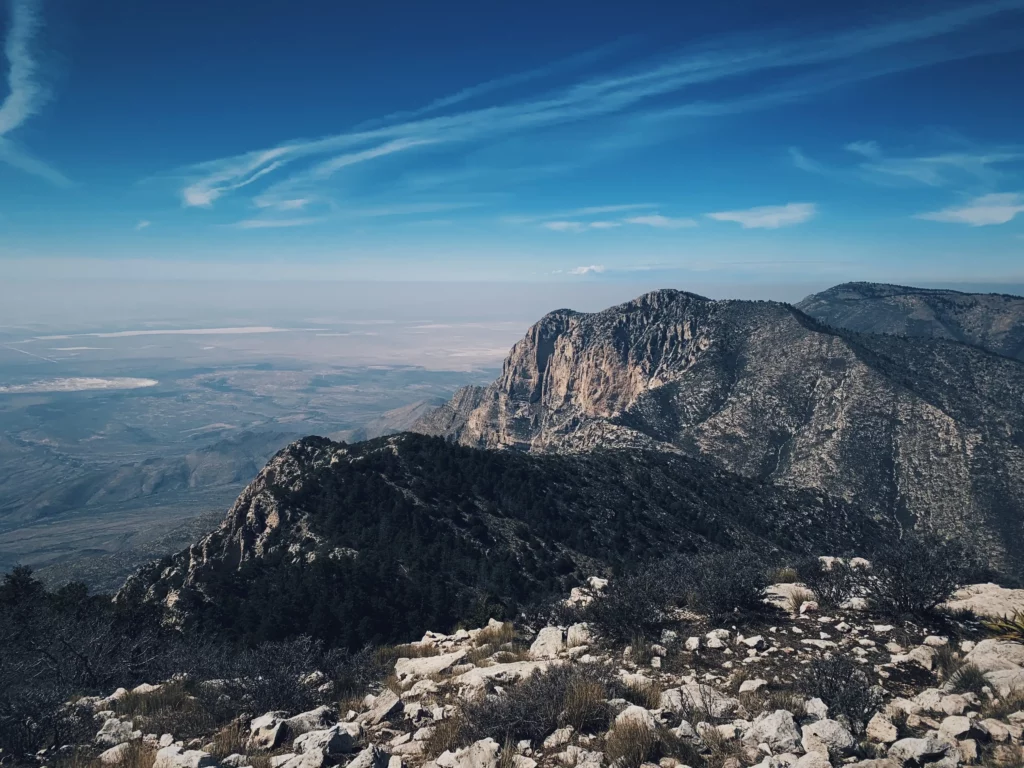
Year Established: 1972
Annual Visitors: 243,000
Size: 76,293 Acres
Best Time To Visit: March to May, September to November
Learn More About Guadalupe National Park Here.
Other Texas National Park Units
- Alibates Flint Quarries National Monument
- Amistad National Recreation Area
- Big Thicket National Preserve
- Chamizal National Memorial
- El Camino Real de los Tejas National Historic Trail
- El Camino Real de Tierra Adentro National Historic Trail
- Fort Davis National Historic Site
- Lake Meredith National Recreation Area
- Lyndon B. Johnson National Historical Park
- Padre Island National Seashore
- Palo Alto Battlefield National Historical Park
- Rio Grande Wild and Scenic River
- San Antonio Missions National Historical Park
- Waco Mammoth National Monument
Utah National Parks
Are you heading to the Utah area soon? Find the best Utah RV Parks here.
Arches National Park

Year Established: 1971
Annual Visitors: 1.81 Million
Size: 76,679 Acres
Best Time to Visit: March to May, September to November
Learn More About Arches National Park Here
Bryce Canyon National Park

Year Established: 1928
Annual Visitors: 2.10 Million
Size: 35,835 Acres
Best Time to Visit: April to October
Learn More About Bryce Canyon National Park Here
Canyonlands National Park
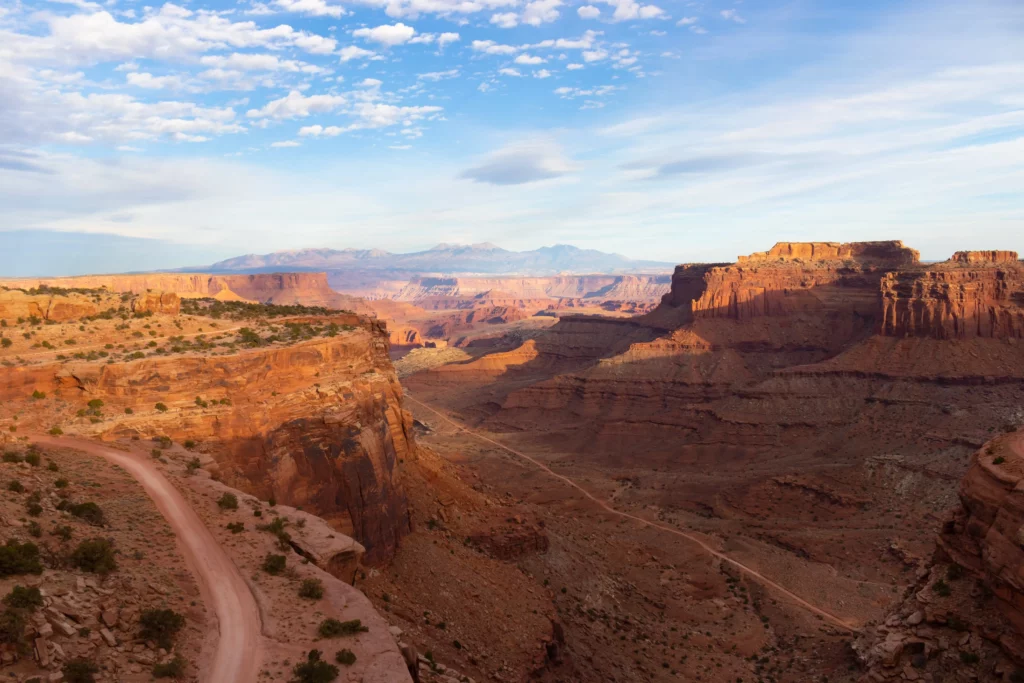
Year Established: 1964
Annual Visitors: 912,000
Size: 257,640 Acres
Best Time to Visit: March to May, September to November
Learn More About Canyonlands National Park Here
Capitol Reef National Park
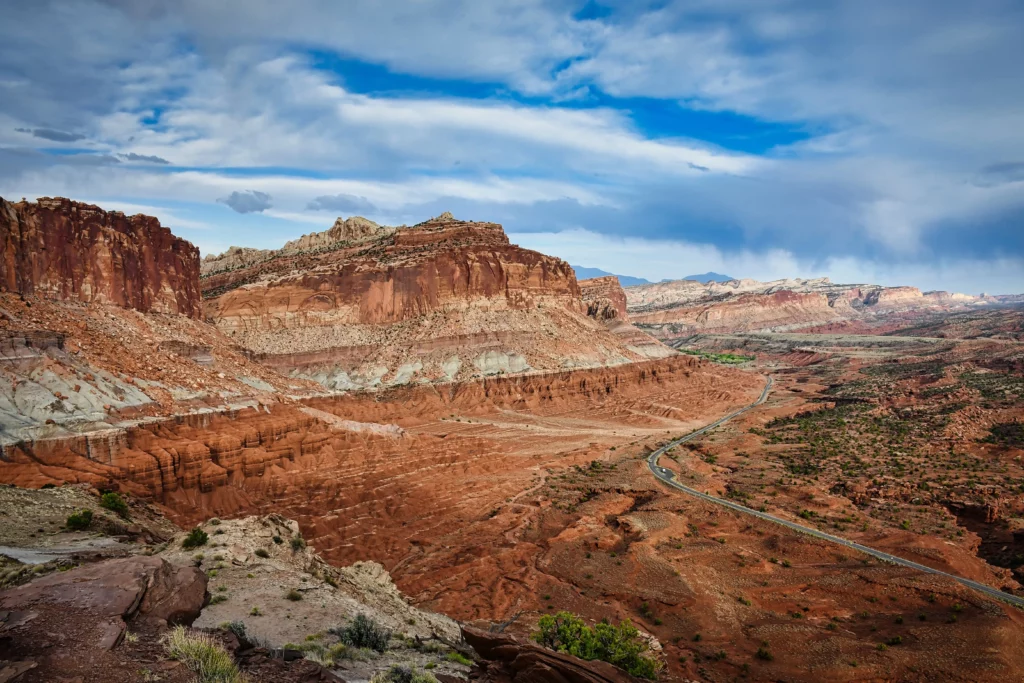
Year Established: 1971
Annual Visitors: 1.40 Million
Size: 241,900 Acres
Best Time to Visit: March to May, September to November
Learn More About Capitol Reef National Park Here
Zion National Park

Year Established: 1919
Annual Visitors: 5.04 Million
Size: 147,243 Acres
Best Time to Visit: April to October
Learn More About Zion National Park Here
Other Utah National Park Units
- California National Historic Trail
- Cedar Breaks National Monument
- Dinosaur National Monument
- Glen Canyon National Recreation Area
- Golden Spike National Historical Park
- Hovenweep National Monument
- Mormon Pioneer National Historic Trail
- Natural Bridges National Monument
- Old Spanish National Historic Trail
- Pony Express National Historic Trail
- Rainbow Bridge National Monument
- Timpanogos Cave National Monument
Virgin Islands National Parks
U.S. Virgin Islands National Park

Year Established: 1956
Annual Visitors: 324,000
Size: 15,052 Acres
Best Time to Visit: December to April
Learn More About U.S. Virgin Islands National Park Here
Other Virgin Islands National Park Units
- Buck Island Reef National Monument
- Christiansted National Historic Site
- Salt River Bay National Historical Park and Ecological Preserve
- Virgin Islands Coral Reef National Monument
Virginia National Parks
Are you heading to the Virginia area soon? Find the best Virginia RV Parks here.
Shenandoah National Park

Year Established: 1935
Annual Visitors: 1.59 Million
Size: 199,224 Acres
Best Time To Visit: September to November
Learn More About Shenandoah National Park Here.
Other Virginia National Park Units
- Appalachian National Scenic Trail
- Appomattox Court House National Historical Park
- Arlington House, The Robert E. Lee Memorial
- Assateague Island National Seashore
- Blue Ridge Parkway
- Booker T. Washington National Monument
- Captain John Smith Chesapeake National Historic Trail
- Cedar Creek & Belle Grove National Historical Park
- Chesapeake Bay Watershed
- Civil War Defenses of Washington
- Colonial National Historical Park
- Cumberland Gap National Historic Park
- Fort Monroe National Monument
- Fredericksburg & Spotsylvania National Military Park
- George Washington Birthplace National Monument
- George Washington Memorial Parkway
- Great Falls Park
- Green Springs National Historic Landmark District
- Harpers Ferry National Historic Park
- Maggie L. Walker National Historic Site
- Manassas National Battlefield Park
- Overmountain Victory National Historic Trail
- Petersburg National Battlefield
- Potomac Heritage National Scenic Trail
- Prince William Forest Park
- Richmond National Battlefield Park
- Star-Spangled Banner National Historic Trail
- Washington-Rochambeau Revolutionary Route National Historic Trail
- Wolf Trap National Park for the Performing Arts
Washington National Parks
Are you heading to the Washington area soon? Find the best Washington RV Parks here.
Mount Rainier National Park

Year Established: 1899
Annual Visitors: 1.67 Million
Size: 236,380 Acres
Best Time To Visit: July to September
Learn More About Mount Rainier National Park Here.
North Cascades National Park
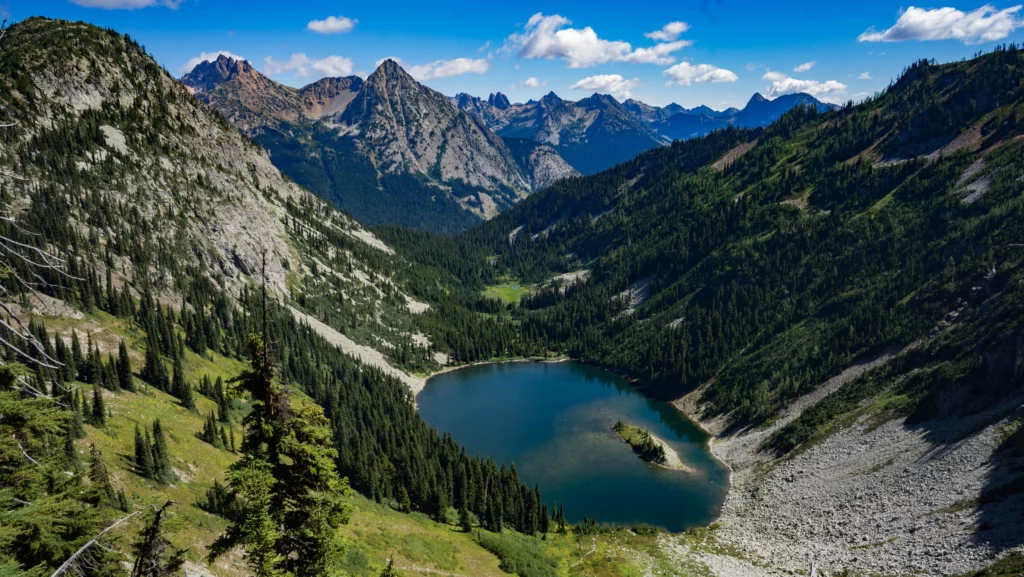
Year Established: 1968
Annual Visitors: 18,000
Size: 505,000 Acres
Best Time To Visit: June to October
Learn More About North Cascades National Park Here.
Olympic National Park

Year Established: 1938
Annual Visitors: 2.72 Million
Size: 922,651 Acres
Best Time To Visit: June to September
Learn More About Olympic National Park Here.
Other Washington National Park Units
- Ebey’s Landing National Historical Reserve
- Fort Vancouver National Historic Site
- Ice Age Floods National Geologic Trail
- Klondike Gold Rush – Seattle Unit National Historical Park
- Lake Chelan National Recreation Area
- Lake Roosevelt National Recreation Area
- Lewis & Clark National Historic Trail
- Lewis and Clark National Historical Park
- Manhattan Project National Historical Park
- Minidoka National Historic Site
- Nez Perce National Historical Park
- Oregon National Historic Trail
- Ross Lake National Recreation Area
- San Juan Island National Historical Park
- Whitman Mission National Historic Site
- Wing Luke Museum Affiliated Area
West Virginia National Parks
Are you heading to the West Virginia area soon? Find the best West Virginia RV Parks here.
New River Gorge National Park

Year Established: 2020
Annual Visitors: 1.68 Million
Size: 72,808 Acres
Best Time To Visit: April to October
Learn More About New River Gorge National Park Here.
Other West Virginia National Park Units
- Appalachian National Scenic Trail
- Bluestone National Scenic River
- Chesapeake & Ohio Canal National Historical Park
- Chesapeake Bay Watershed
- Gauley River National Recreation Area
- Harpers Ferry National Historical Park
- Lewis & Clark National Historic Trail
Wyoming National Parks
Are you heading to the Wyoming area soon? Find the best Wyoming RV Parks here.
Grand Teton National Park
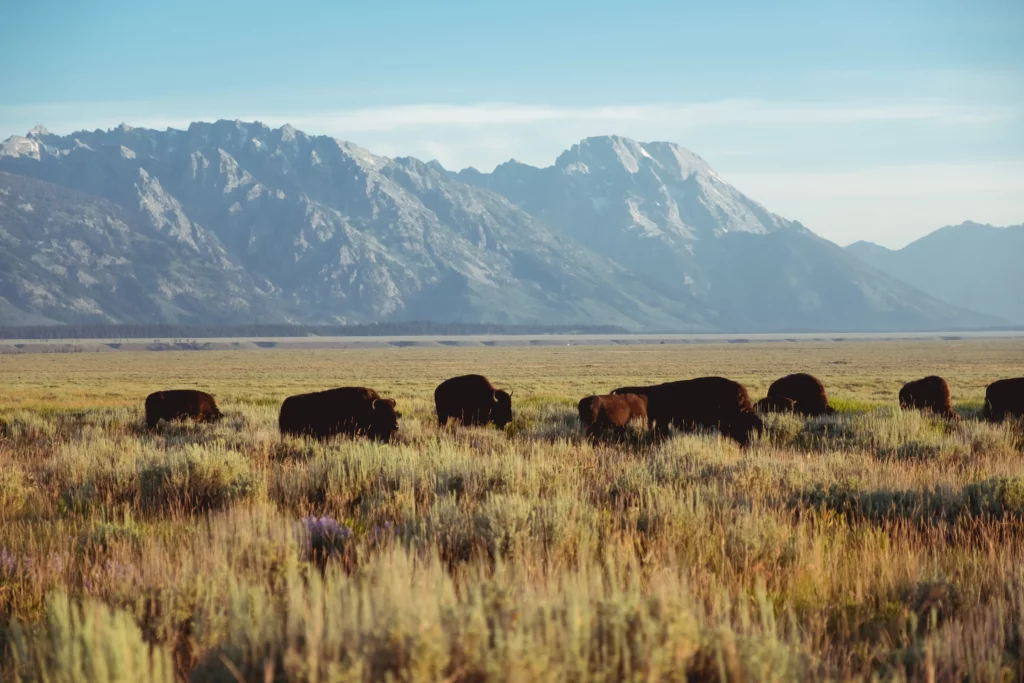
Year Established: 1929
Annual Visitors: 3.89 Million
Size: 310,444 Acres
Best Time To Visit: June to September
Learn More About Grand Teton National Park Here.
Yellowstone National Park

Year Established: 1872
Annual Visitors: 4.86 Million
Size: 2.2 Million Acres
Best Time To Visit: July to October
Learn More About Yellowstone National Park Here.
Other Wyoming National Park Units
- Bighorn Canyon National Recreation Area
- California National Historic Trail
- Devils Tower National Monument
- Fort Laramie National Historic Site
- Fossil Butte National Monument
- Mormon Pioneer National Historic Trail
- Oregon National Historic Trail
- Pony Express National Historic Trail
List of States Without National Parks (But With A National Park Unit)
Alabama
- Birmingham Civil Rights National Monument
- Freedom Riders National Monument
- Horseshoe Bend National Military Park
- Little River Canyon National Preserve
- Natchez Trace Parkway
- Natchez Trace National Scenic Trail
- Russell Cave National Monument
- Selma To Montgomery National Historic Trail
- Trail of Tears National Historic Trail
- Tuskegee Airmen National Historic Site
- Tuskegee Institute National Historic Site
Connecticut
- Appalachian National Scenic Trail
- Coltsville National Historical Park
- New England National Scenic Trail
- Washington-Rochambeau Revolutionary Route National Historic Trail
- Weir Farm National Historical Park
Delaware
- Captain John Smith Chesapeake National Historic Trail
- Chesapeake Bay Watershed
- First State National Historical Park
- Washington-Rochambeau Revolutionary Route National Historic Trail
District of Columbia
- African American Civil War Memorial
- Anacostia Park
- Belmont-Paul Women’s Equality National Monument
- Capitol Hill Parks
- Captain John Smith Chesapeake National Historic Trail
- Carter G. Woodson Home National Historic Site
- Chesapeake & Ohio Canal National Historical Park
- Chesapeake Bay Watershed
- Civil War Defenses of Washington
- Constitution Gardens
- Dwight D. Eisenhower Memorial
- Ford’s Theatre National Historic Site
- Fort Dupont Park
- Franklin Delano Roosevelt Memorial
- Frederick Douglass National Historic Site
- George Washington Memorial Parkway
- Kenilworth Park & Aquatic Gardens
- Korean War Veterans Memorial
- Lincoln Memorial
- Lyndon Baines Johnson Memorial Grove on the Potomac
- Martin Luther King Jr. Memorial
- Mary McLeod Bethune Council House National Historic Site
- National Capital Parks – East
- National Mall and Memorial Parks
- Pennsylvania Avenue National Historic Site
- Potomac Heritage National Scenic Trail
- President’s Park (White House)
- Rock Creek Park
- Theodore Roosevelt Island
- Thomas Jefferson Memorial
- Vietnam Veterans Memorial
- Washington Monument
- Washington-Rochambeau Revolutionary Route National Historic Trail
- World War I Memorial
- World War II Memorial
Georgia
- Andersonville National Historic Site
- Appalachian National Scenic Trail
- Chattahoochee River National Recreation Area
- Chickamauga & Chattanooga National Military Park
- Cumberland Island National Seashore
- Fort Frederica National Monument
- Fort Pulaski National Monument
- Jimmy Carter National Historical Park
- Kennesaw Mountain National Battlefield Park
- Martin Luther King, Jr. National Historical Park
- Ocmulgee Mounds National Historical Park
- Trail of Tears National Historic Trail
Guam
- War in the Pacific National Historical Park
Idaho
- California National Historic Trail
- City of Rocks National Reserve
- Craters of the Moon National Monument & Preserve
- Hagerman Fossil Beds National Monument
- Ice Age Floods National Geologic Trail
- Lewis & Clark National Historic Trail
- Minidoka National Historic Site
- Nez Perce National Historical Park
- Oregon National Historic Trail
Illinois
- Lewis & Clark National Historic Trail
- Lincoln Home National Historic Site
- Mormon Pioneer National Historic Trail
- Pullman National Monument
- Trail of Tears National Historic Trail
Iowa
- Effigy Mounds National Monument
- Herbert Hoover National Historic Site
- Lewis & Clark National Historic Trail
- Mormon Pioneer National Historic Trail
Kansas
- Brown v. Board of Education National Historic Site
- California National Historic Trail
- Fort Larned National Historic Site
- Fort Scott National Historic Site
- Lewis & Clark National Historic Trail
- Nicodemus National Historic Site
- Oregon National Historic Trail
- Pony Express National Historic Trail
- Santa Fe National Historic Trail
- Tallgrass Prairie National Preserve
Louisiana
- Cane River Creole National Historical Park
- El Camino Real de los Tejas National Historic Trail
- Jean Lafitte National Historical Park and Preserve
- New Orleans Jazz National Historical Park
- Poverty Point National Monument
- Vicksburg National Military Park
Maryland
- Antietam National Battlefield
- Appalachian National Scenic Trail
- Assateague Island National Seashore
- Baltimore-Washington Parkway
- Captain John Smith Chesapeake National Historic Trail
- Catoctin Mountain Park
- Chesapeake & Ohio Canal National Historical Park
- Chesapeake Bay Watershed
- Civil War Defenses of Washington
- Clara Barton National Historic Site
- Fort Foote Park
- Fort McHenry National Monument and Historic Shrine
- Fort Washington Park
- George Washington Memorial Parkway
- Glen Echo Park
- Greenbelt Park
- Hampton National Historic Site
- Harmony Hall
- Harpers Ferry National Historical Park
- Harriet Tubman Underground Railroad National Historical Park
- Monocacy National Battlefield
- Oxon Cove Park & Oxon Hill Farm
- Piscataway Park
- Potomac Heritage National Scenic Trail
- Star-Spangled Banner National Historic Trail
- Thomas Stone National Historic Site
- Washington-Rochambeau Revolutionary Route National Historic Trail
Massachusetts
- Adams National Historical Park
- Appalachian National Scenic Trail
- Blackstone River Valley National Historical Park
- Boston African American National Historic Site
- Boston Harbor Islands National Recreation Area
- Boston National Historical Park
- Cape Cod National Seashore
- Frederick Law Olmsted National Historic Site
- John Fitzgerald Kennedy National Historic Site
- Longfellow – Washington’s Headquarters National Historic Site
- Lowell National Historical Park
- Minute Man National Historical Park
- New Bedford Whaling National Historical Park
- New England National Scenic Trail
- Salem Maritime National Historic Site
- Saugus Iron Works National Historic Site
- Springfield Armory National Historic Site
- Washington-Rochambeau Revolutionary Route National Historic Trail
Mississippi
- Brices Cross Roads National Battlefield Site
- Gulf Islands National Seashore
- Medgar and Myrlie Evers Home National Monument
- Natchez National Historical Park
- Natchez Trace National Scenic Trail
- Natchez Trace Parkway
- Shiloh National Military Park
- Tupelo National Battlefield
- Vicksburg National Military Park
Nebraska
- Agate Fossil Beds National Monument
- California National Historic Trail
- Homestead National Historical Park
- Lewis & Clark National Historic Trail
- Missouri National Recreational River
- Mormon Pioneer National Historic Trail
- Niobrara National Scenic River
- Oregon National Historic Trail
- Pony Express National Historic Trail
- Scotts Bluff National Monument
New Hampshire
- Appalachian National Scenic Trail
- Saint-Gaudens National Historical Park
New Jersey
- Appalachian National Scenic Trail
- Delaware Water Gap National Recreation Area
- Gateway National Recreation Area
- Great Egg Harbor River
- Lower Delaware National Wild and Scenic River
- Morristown National Historical Park
- New Jersey Pinelands National Reserve
- Paterson Great Falls National Historical Park
- Statue of Liberty National Monument
- Thomas Edison National Historical Park
- Washington-Rochambeau Revolutionary Route National Historic Trail
New York
- African Burial Ground National Monument
- Appalachian National Scenic Trail
- Captain John Smith Chesapeake National Historic Trail
- Castle Clinton National Monument
- Chesapeake Bay Watershed
- Eleanor Roosevelt National Historic Site
- Federal Hall National Memorial
- Fire Island National Seashore
- Fort Stanwix National Monument
- Gateway National Recreation Area
- General Grant National Memorial
- Governors Island National Monument
- Hamilton Grange National Memorial
- Harriet Tubman National Historical Park
- Home of Franklin D. Roosevelt National Historic Site
- Lower East Side Tenement Museum
- Martin Van Buren National Historic Site
- National Parks of New York Harbor
- North Country National Scenic Trail
- Sagamore Hill National Historic Site
- Saint Paul’s Church National Historic Site
- Saratoga National Historical Park
- Statue of Liberty National Monument
- Stonewall National Monument
- Theodore Roosevelt Birthplace National Historic Site
- Theodore Roosevelt Inaugural National Historic Site
- Thomas Cole National Historic Site
- Upper Delaware Scenic & Recreational River
- Vanderbilt Mansion National Historic Site
- Washington-Rochambeau Revolutionary Route National Historic Trail
- Women’s Rights National Historical Park
North Carolina
- Appalachian National Scenic Trail
- Blue Ridge Parkway
- Cape Hatteras National Seashore
- Cape Lookout National Seashore
- Carl Sandburg Home National Historic Site
- Fort Raleigh National Historic Site
- Guilford Courthouse National Military Park
- Moores Creek National Battlefield
- Over mountain Victory National Historic Trail
- Trail of Tears National Historic Trail
- Wright Brothers National Memorial
Oklahoma
- Chickasaw National Recreation Area
- Fort Smith National Historic Site
- Oklahoma City National Memorial
- Santa Fe National Historic Trail
- Trail of Tears National Historic Trail
- Washita Battlefield National Historic Site
Pennsylvania
- Allegheny Portage Railroad National Historic Site
- Appalachian National Scenic Trail
- Captain John Smith Chesapeake National Historic Trail
- Chesapeake Bay
- Delaware Water Gap National Recreation Area
- Edgar Allan Poe National Historic Site
- Eisenhower National Historic Site
- First State National Historical Park
- Flight 93 National Memorial
- Fort Necessity National Battlefield
- Friendship Hill National Historic Site
- Gettysburg National Military Park
- Gloria Dei Church National Historic Site
- Hopewell Furnace National Historic Site
- Independence National Historical Park
- Johnstown Flood National Memorial
- Lewis & Clark National Historic Trail
- Lower Delaware National Wild and Scenic River
- North Country National Scenic Trail
- Potomac Heritage National Scenic Trail
- Steamtown National Historic Site
- Thaddeus Kosciuszko National Memorial
- Upper Delaware Scenic and Recreational River
- Valley Forge National Historical Park
- Washington-Rochambeau Revolutionary Route National Historic Trail
Puerto Rico
- San Juan National Historic Site
Rhode Island
- Blackstone River Valley National Historical Park
- Roger Williams National Memorial
- Touro Synagogue National Historic Site
- Washington-Rochambeau Revolutionary Route National Historic Trail
Vermont
- Appalachian National Scenic Trail
- Marsh-Billings-Rockefeller National Historical Park
- North Country National Scenic Trail
Wisconsin
- Apostle Islands National Lakeshore
- Ice Age National Scenic Trail
- North Country National Scenic Trail
- Saint Croix National Scenic Riverway

US National Parks
Frequently Asked
Questions
How many US national parks are there?
There are a total of 423 parks across the country that the U.S. National Park Service protects. But when it comes to a designated “National Park”, only 63 places have gained the title.
There is almost 130k square miles in the U.S. that is safeguarded by being a national park area. You can find a park to explore in every state, plus the District of Columbia, Puerto Rico, the Virgin Islands, and American Samoa!
Are there 62 or 63 US national parks?
There are 63 US national parks as of 2022. West Virginia’s New River Gorge National Park is the newest addition and was opened to the public in 2020.
Want to check every national park off your bucket list?
Download your free U.S. National Park Checklist!
Which state has the most national parks?
There are nine national parks in California, the most of any state. The parks in California feature everything from snow capped mountains to desert terrain to lush forests. The next three states with the most national parks to explore are Alaska (8), Utah (5), and Colorado (4).
Which is the smallest national park in the U.S.?
Gateway Arch National Park is the smallest national park in the United States. This park opened in 2018 in the middle of downtown St. Louis, Missouri and is only 91 acres in size.
The size of this historic park is only a fraction of that of other national parks.
That’s less than one-thousandth of one percent of the largest national park (Wrangell-St. Elias National Park in Alaska)!
Which is the largest national park in the US?
Wrangell-St. Elias National Park in Alaska is the largest national park in America. The national park and preserve together make up 13 million acres of this enormous park.
That means Wrangell-St. Elias National Park makes up roughly 4% of Alaska’s total area.
In other crazy news, Alaska is home to the second, third, and fourth largest national parks in the United States too!
Does every state in America have a national park?
The short answer, no. Not every state really has a national park, however, all states in America do have sites that are protected under the Nation Park System.
The following states do not have any designated national parks:
Alabama, Connecticut, Delaware, Georgia, Illinois, Iowa, Kansas, Louisiana, Maryland, Massachusetts, Mississippi, Nebraska, New Hampshire, New Jersey, New York, Oklahoma, Pennsylvania, Rhode Island, Vermont, and Wisconsin.
What state does not have a national park?
As of 2022, no National Park Service-managed park units (such as parks, monuments, and historic sites) can be found in the state of Delaware.
How many states have national parks?
There are national parks in 30 of the 50 states. National parks can also be found in the US Virgin Islands and American Samoa, two of the United States’ possessions. The 63 national parks are protected by these states and territories.
The following states are home to at least one national park:
Alaska, American Samoa, Arizona, Arkansas, California, Colorado, Florida, Hawaii, Indiana, Kentucky, Maine, Michigan, Minnesota, Missouri, Montana, Nevada, New Mexico, North Dakota, Ohio, Oregon, South Carolina, South Dakota, Tennessee, Texas, US Virgin Islands, Utah, Virginia, Washington, West Virginia, Wyoming.
What is the best way to keep track of US national parks visited?
A national park checklist is the simplest way to help you keep track of which parks you’ve visited and which you still need to see. Our list of national parks can be printed out and crossed off as you visit them.
You can also keep track of your visits to national parks by using a national park passport or a national park scratch-off map.
These are fun to use as they can be kept as a lifelong souvenir of your adventures!
Which national park is in 3 states?
Yellowstone is the only US national park that spans three different states. It is true that the majority of the park is in the northwest corner of Wyoming, but there are also sections that extend into the states of Idaho and Montana.
Free US National Park Checklist + Map!



